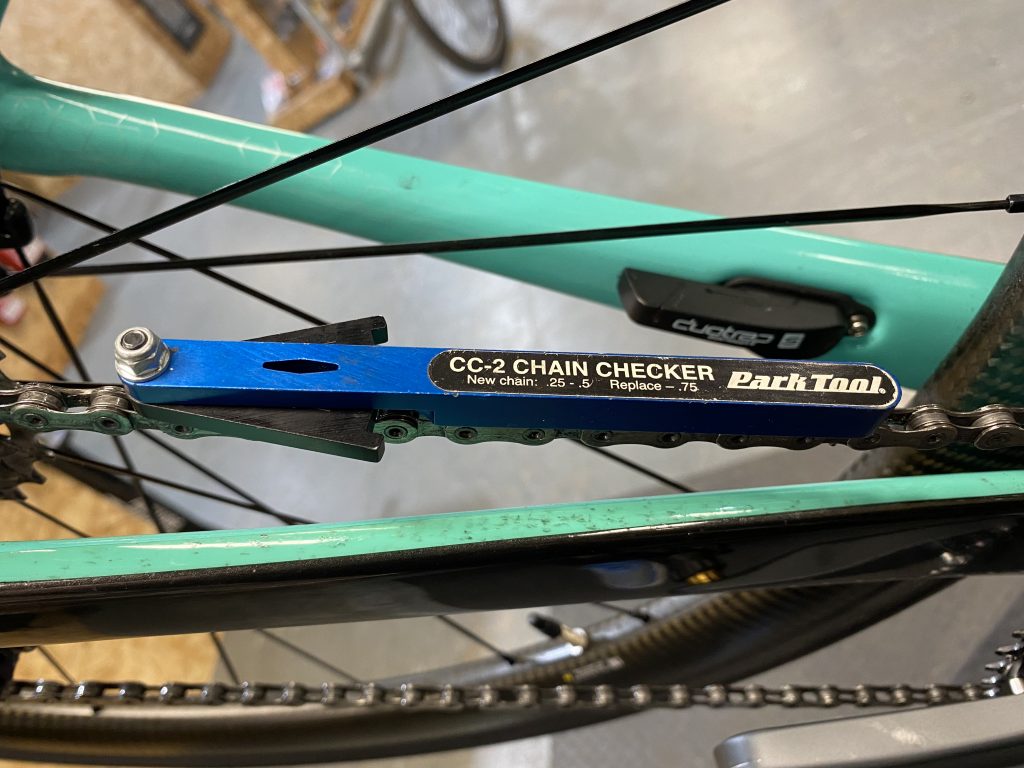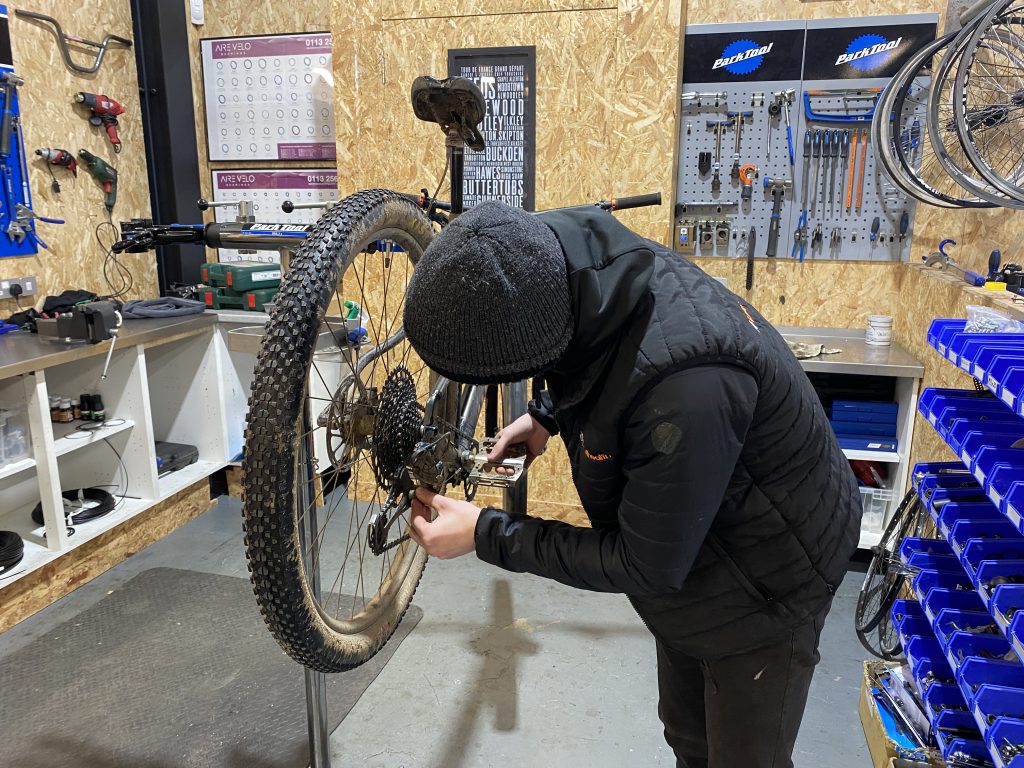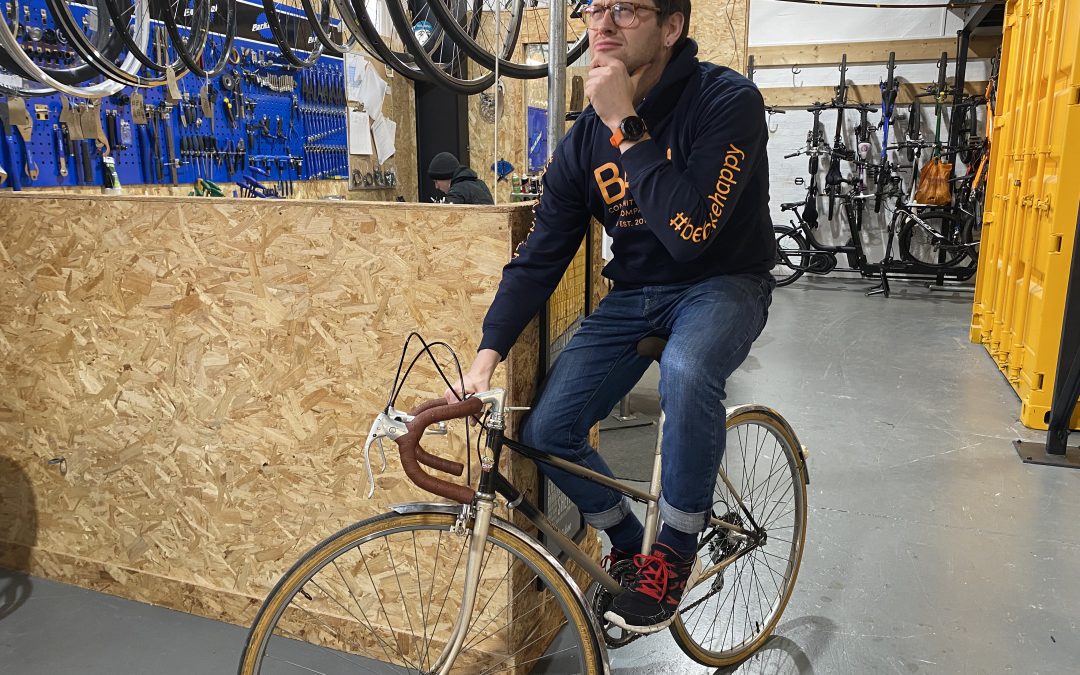We give you four tips to try and answer the million-dollar question.
How can you tell when your bike is due a service? This is can be a difficult question to answer for our customers, but really if you follow any of these four simple steps you should be able to avoid damaging your bike by over-riding it.
Bikes aren’t like cars – the gearbox in a car is tucked away from the elements, and a regular check every few thousand miles and a change of oil will keep it running smoothly. On a bike, your gears are on the outside meaning the length of service interval is influenced hugely by what weather you ride in, where you ride, how hard you ride and what components you use. That’s what makes this question so difficult to answer – but follow these tips, listen to your bike, and you’ll keep it running smoothly.
Method One
The Fail-Safe Method: Use a Chain Checker
As you roll on through the miles on your bike, the force you apply to the pedals will stretch the chain. The rate at which this happens depends on how clean you keep your chain, which oil you use, how strong you are. If you let a chain wear too much, it can wear down your other components (like your cassette and chainrings). By using a chain checker to tell when your chain is worn, you can avoid having to replace the whole transmission – typically you can put 3 or 4 new chains on a cassette before it is too worn, provided the chains are replaced at the right time.

New chains come out of the box at between 0.0 to 0.25. A measurement of 0.75 wear is the ideal time to replace, and anything more than 0.75 indicates excessive stretch and a high probability of wear to the other components in your transmission. When your chain gets to 0.75, have it replaced, and use this as a prompt for inspecting the rest of the bike too. This way, you’ll never miss a service. We have basic chain checkers available from just £5.
Method Two
The Rule of Thumb: Time
If you don’t have a chain checker, your next best guide is time. If you want to keep on top of your bike (pun intended), keeping it out of the workshop for long periods by preventing damage is the best strategy. The best thing to do is to bring the bike in for regular inspections, to avoid problems developing.
If you ride regularly (lets say every weekend, or twice a week) we would advise a standard service every 6 Months.
If you hammer out the miles, commute every day and ride in all conditions, we recommend even every 3 months. Because you’re covering so many miles in bad weather, problems will develop even faster and could become much more expensive more quickly.
If you’re riding casually (lets say once or twice a month), once a year should be fine. Its a good idea to keep on top of your servicing, but with less miles covered you can get away with leaving it a while longer.
Method Three
The Observant Method: Listen to your Bike
Listen to your bike – and I mean that literally – it’s trying to tell you something.
Bikes all make noise – from the best set up professional level road racer to a basic child’s bike. It’s not noises per se we’re looking out for, but new noises. The annoying click from the rear wheel, the squeak from the chain – if the bike didn’t make the noise previously then something has changed. Parts may have worn down, lube may have dried up (or gathered excessively) and the bike is asking for some attention.

Some important points to note. Your average Enduro or downhill bike will make a lot of noise compared to a well set up road bike. The sheer number of moving parts means you can expect a little bit of noise from components. Thats why we apply the same rule to all bikes; listen out for the new noises.
That click might not be where you think it’s from; with the modern highly capable and stiff materials used in bikes these days, a click which sounds like it’s coming from the bottom bracket can be a reverberation from the headset. That dodgy front hub, could just be a badly greased seat pin; it’s best to get an expert opinion.
Method Four
The Last Chance Saloon: It’s Stopped Working
If your bike isn’t working, it’s definitely time for a service! This could be anything from gears not quite indexing right, to brakes not fully stopping you. It seems silly to say this, but riding your bike when it doesn’t work properly will only further damage the components and you could end up hurting yourself. Time to give your bike some love!
That said, your bike might not fully cease to work and make it obvious for you. You might need to keep an eye out for your brakes not quite working as well as they should, or gears taking just a little longer than usual to shift into place. If it doesn’t feel quite right, it probably isn’t.
If I could give you just one piece of advice, it would be buy a chain checker. If you use it right, you should never miss a service. Failing that, use a combination of methods 2-4 and you should be able to keep your bike working well all year round!

